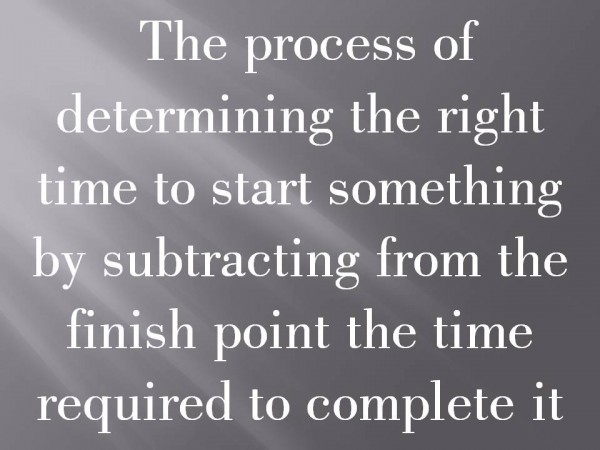Jesus had a plan…and he executed it right on time.
As the time approached for him to be taken up to heaven, Jesus resolutely set out for Jerusalem. Luke 9:51 (NIV)
Short of the divine knowledge Jesus possessed, few of us would be able to deliver exactly on time with as far to travel and as many things to do. Along the way he taught parables, eased Martha to the better choice, confronted demons, expressed woes to the pharisees, healed people, dined with his disciples, and prayed all night before being arrested…right on time.
Granted, the things we do day-to-day don’t have eternal consequences for all of humanity, but why do we seem to always miss deadlines, cram all night to study or finish a project, or flat out miss deadlines? We’ve lost the art of backward planning.
 Backward planning is the process of determining the right time to start something by subtracting from the finish point the time required to complete it .
Backward planning is the process of determining the right time to start something by subtracting from the finish point the time required to complete it .
Here’s a simple example: It takes 2 hours to drive to your mothers and you need to be there by 7:00pm. Subtract 2 hours from 7pm and you need to leave at five. WAIT, WAIT…don’t stop reading, it gets better.
What we fail to do is apply this simple concept to more complex projects like the yearly report, your masters degree thesis, or even family panning. Here’s some simple steps to backward plan your next project.
- Determine the finish point
- List all tasks that must be done in order
- Estimate the length of each task
- Subtract each length from the finish point
Here is a case study from work. Every year we start training for all of our employees in October. Each leader must determine what and how they will conduct their training for the year but it must be approved by the boss before it can be scheduled and paid for. After backward planning we found we were starting the project three MONTHS too late. Here’s what we did
Finish point: Each training plan had to be finished by October 1st
Tasks in order (time to complete): Boss give guidance for training to staff (begin), staff researches and prepares written guidance for subordinate leaders (one month), The boss reviews, approves and issues written guidance (one week), regional leaders prepare their training plans (one month), regional leaders brief their plan to the boss for approval (one week), regional leaders issue their training plan to field managers (one week), field managers schedule and resource training (typically three months to get trainers and materials)
Backward plan: October 1st – 3 months for resourcing = July 1st – one week to issue plan = June 25th – one week to brief the boss = June 18th – one month to prepare the plan = May 18th – one week to review guidance = May 11th – one month to prepare guidance = April 11th.
Start point: The boss has to give guidance by April 11th or the training will be rushed, late, or poorly executed. May 11th, May 18th, June 18th, June 25th, and July 1st become milestones to be reached on your way to on-time execution on October 1st
It’s easier to backward plan visually so use the calendar of your choice or sketch it out on a white board (my favorite). If you backward plan routinely and stick to your milestones you will deliver a better project every time…on time.
